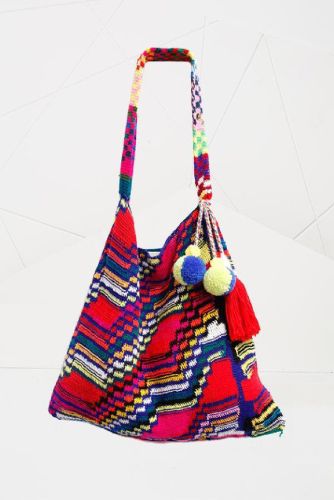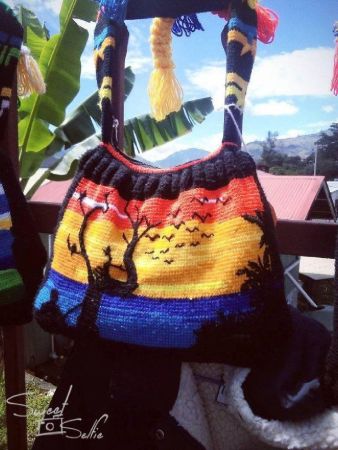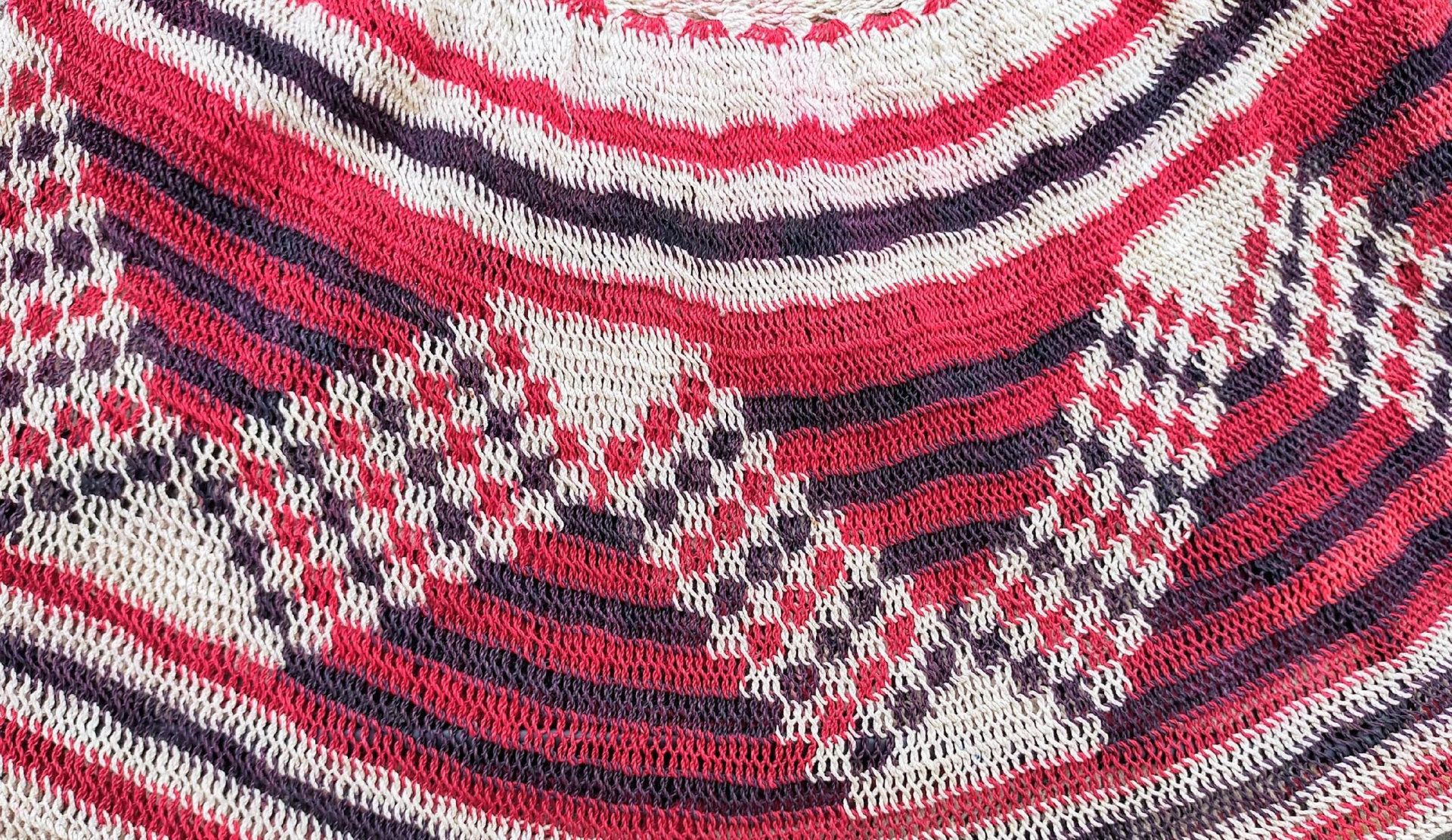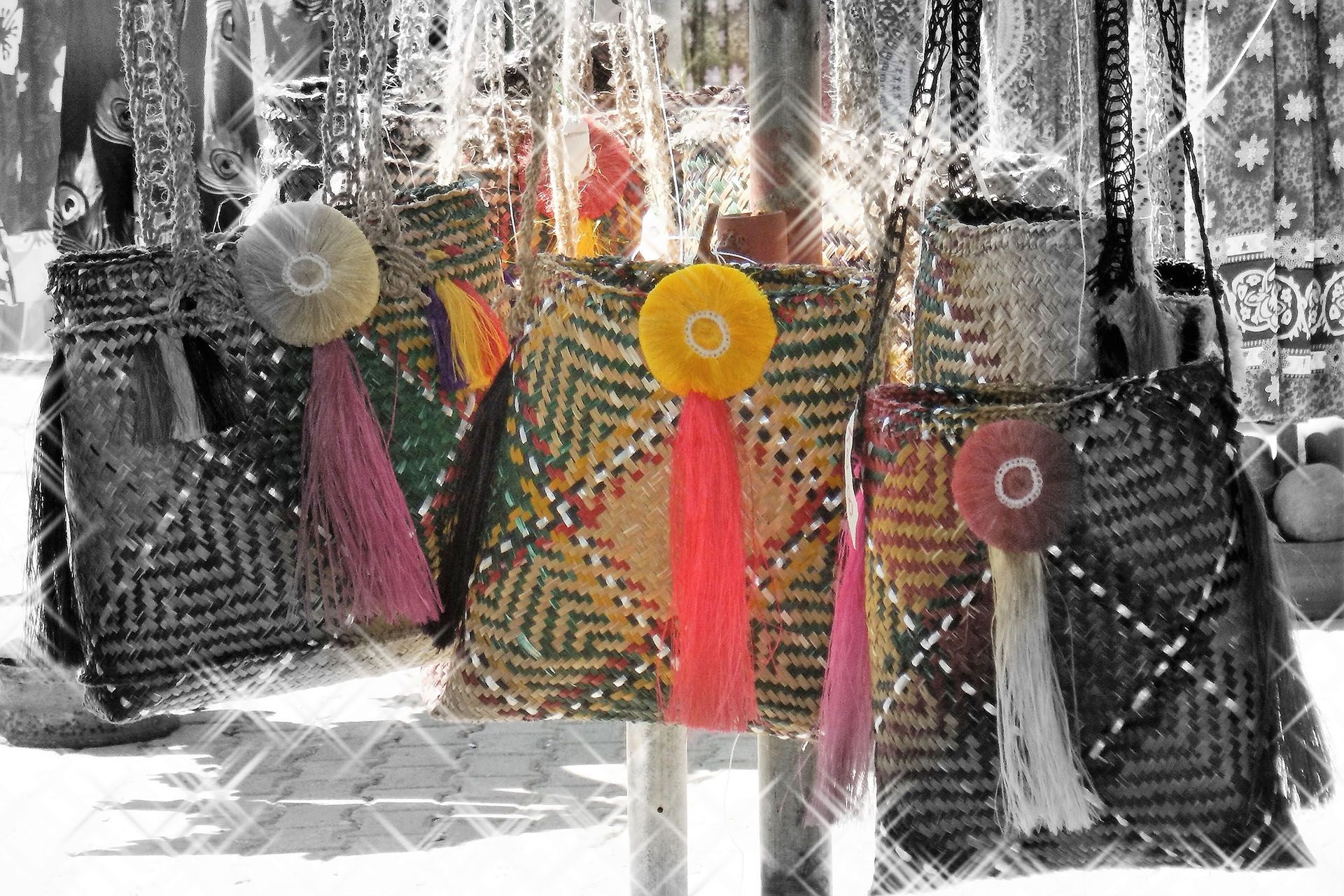Bilum
Pronounced: Bee – loom, Papua New Guinea Traditional woven HAND BAG
What is a BILUM?
- Bilum is a hand bag made using traditional intricate technique of twisting and looping passed down through generations.
- Bilums come in various sizes depending on their use and have a variety of colours.
- Popular item in Papua New Guinea carried by all.
Bilum in Different Languages
- Goroka, EHP – Go’
- Karkar , Madang – Kitak
- Bena, EHP – Gu’i
- Hela & Enga – Nu
- Markam – Fo’a
Uses of Bilum
- Dress wear hand bag
- Traditional dancing (“Singsing”) attire
- Funeral attire
- Celebration of achievements
- Gifts to honour or commemorate
- School bags for kids
Significant everyday uses:
- Bilums form part of dressing
- Baby carriage
- Large carriage for garden, washing crops, laundry, and shopping.

Materials used in Bilum making
Traditional material
-
String is made from Tulip Tree and also Sisal fiber (Scientific name: Agave Sisalana) commonly known in PNG as “Lepa”.
- String colour is made from various plant dye such as Turmeric.
- Needle is made from carved dry bones of a fruit bat.
Contemporary material
- String is made from wool or nylon
- Both come in a variety of colours
- The looping needle is made from umbrella ribs or bicycle wheel pokes.
Making a Bilum
Six considerations:
- Choose type of Bilum (purpose)
- Choose colour combination
- Material to use and procurement
- String twisting preparation (“Tanip Rop”)
- Design Consideration
- Weaving consideration


Bilum Today
- Bilum culture ensures the survival of this skill.
-
Bilum industry
- Changes in Handbag design
- Clothing and Fashion
- Homeware
Contact us for any queries?
Call us at 021 0856 6928


